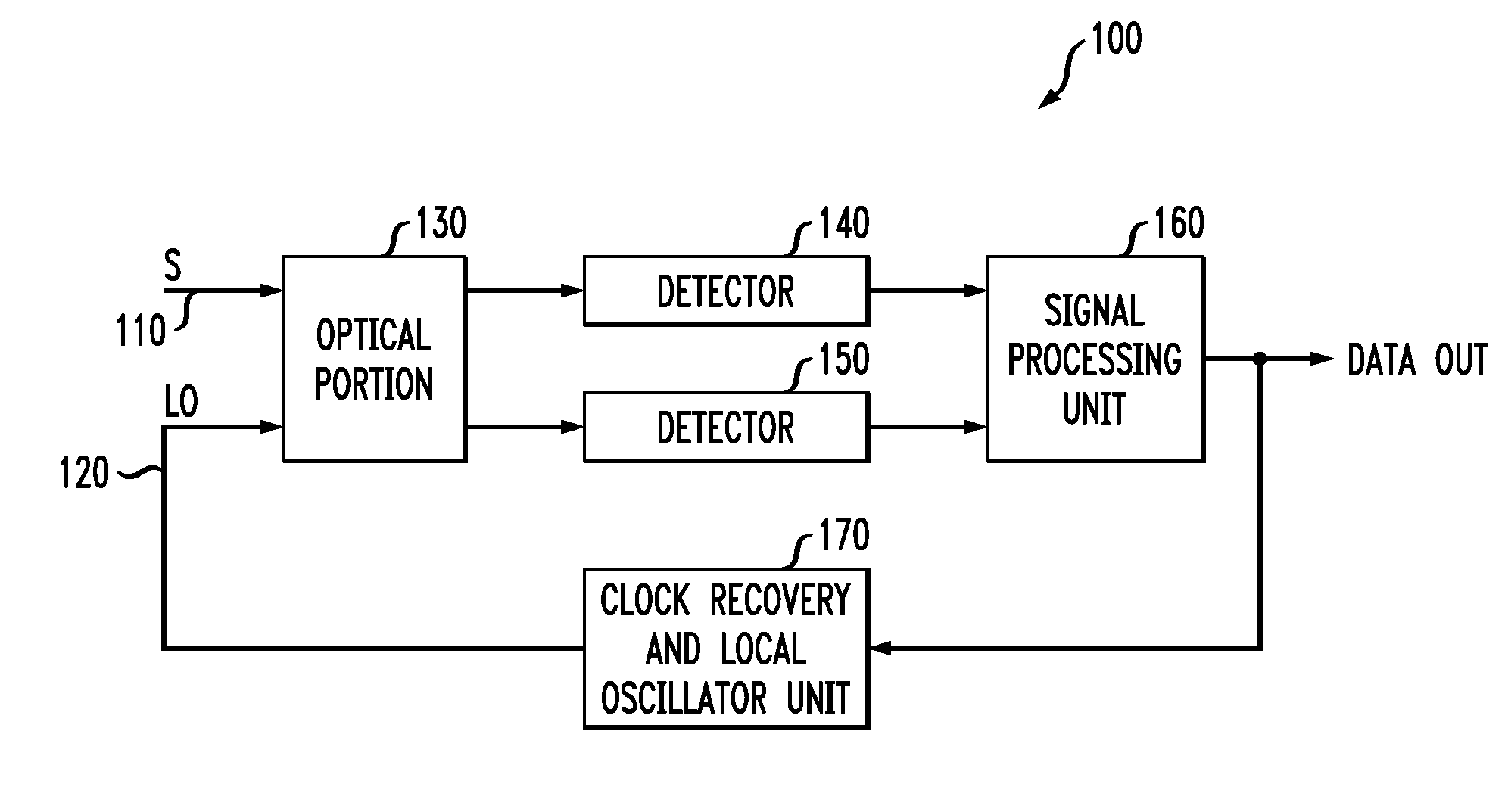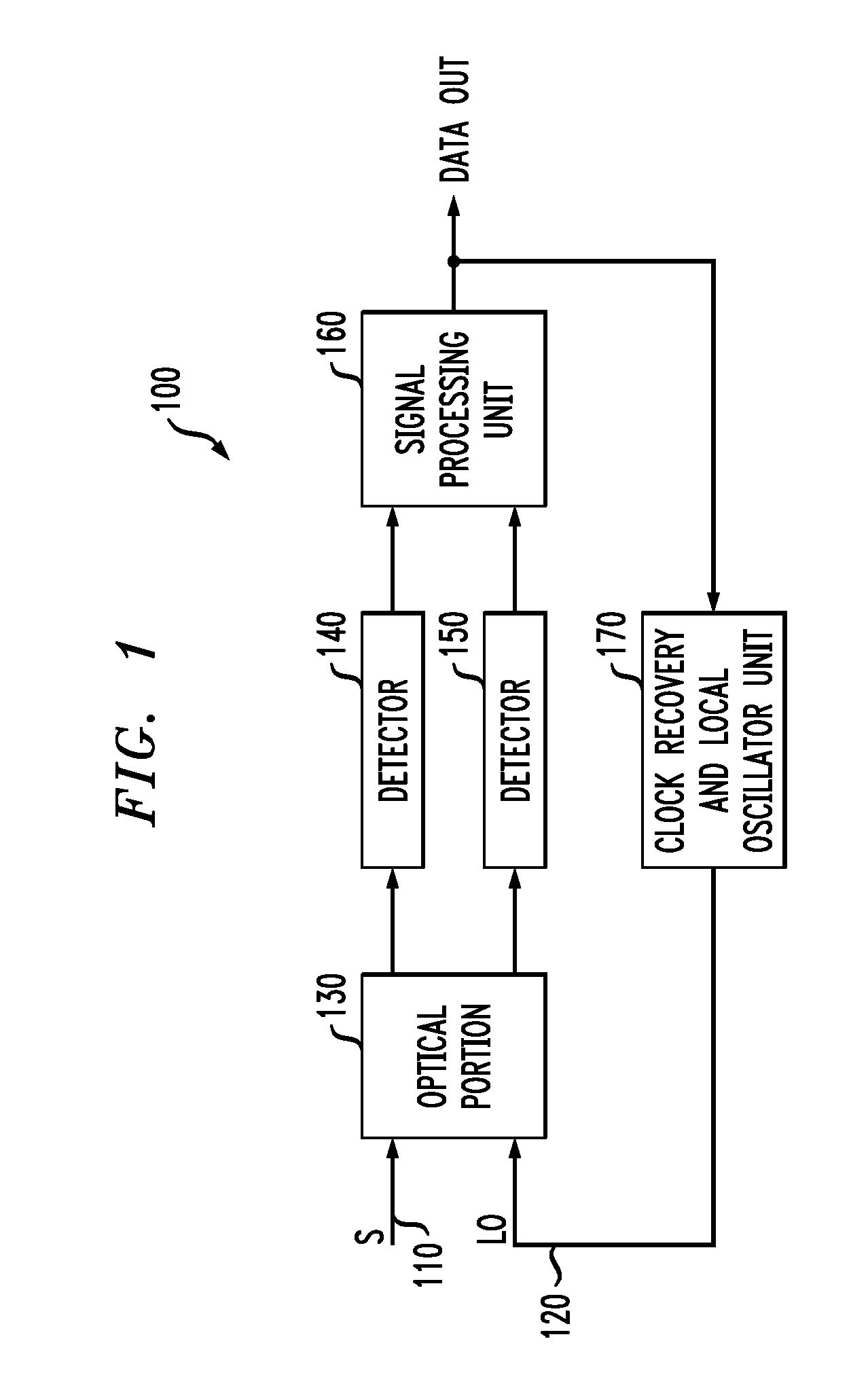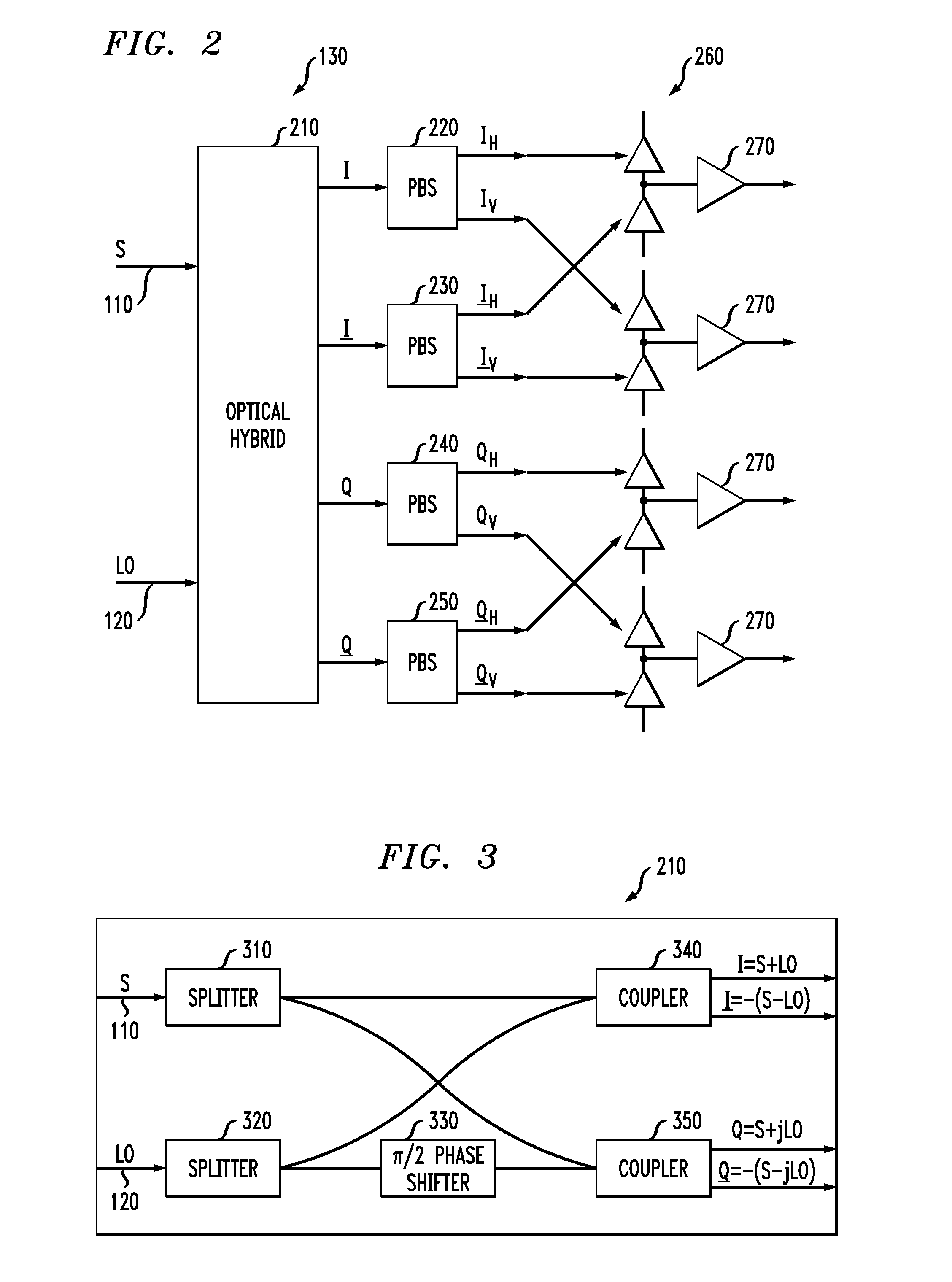System and method for receiving coherent, polarizaztion-multiplexed optical signals
a polarization multiplexing and optical signal technology, applied in electromagnetic transmission, electrical equipment, transmission, etc., can solve the problems of polarization diversity receivers that employ two optical hybrids, experience arbitrary polarization transformation, and high cost of optical hybrids
- Summary
- Abstract
- Description
- Claims
- Application Information
AI Technical Summary
Benefits of technology
Problems solved by technology
Method used
Image
Examples
Embodiment Construction
[0015]Referring initially to FIG. 1, illustrated is a block diagram of a polarization diversity receiver generally designated 100 and configured to demodulate and convert a received optical signal S 110 that is coherent and polarization-multiplexed into electrical signals representing in-phase and quadrature components of S 110. Unlike conventional polarization diversity receivers, the receiver 100 needs only one optical hybrid.
[0016]The receiver 100 receives and demodulates S 110 using a coherent, local oscillator optical signal LO 120. S 110 and LO 120 are received into an optical portion 130, which may include a polarization-insensitive optical hybrid. The optical portion 130 splits and couples S 110 and LO 120 in a manner that will be shown in FIG. 3 to yield at least two output optical signals that are respectively provided to detectors 140, 150, which are photodetectors, such as photodiodes. In turn, the detectors 140, 150 provide electrical signals to a signal processing unit...
PUM
 Login to View More
Login to View More Abstract
Description
Claims
Application Information
 Login to View More
Login to View More - R&D
- Intellectual Property
- Life Sciences
- Materials
- Tech Scout
- Unparalleled Data Quality
- Higher Quality Content
- 60% Fewer Hallucinations
Browse by: Latest US Patents, China's latest patents, Technical Efficacy Thesaurus, Application Domain, Technology Topic, Popular Technical Reports.
© 2025 PatSnap. All rights reserved.Legal|Privacy policy|Modern Slavery Act Transparency Statement|Sitemap|About US| Contact US: help@patsnap.com



